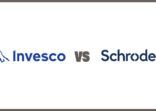The outcome of the negotiations will likely have a substantial impact on European equities.
On the other hand, the European Central Bank’s massive stimulus programme, announced last November, has given a boost to investor sentiment. Moreover, macro tailwinds, including lower fuel prices, a weaker euro and improving credit dynamics have helped companies improve first quarter earnings, JP Morgan Asset Management said in a recent note.
However, the firm said investors need to moderate their return expectations from European equities this year. Valuations are at 10-year high and strong earnings growth is needed to justify them.
Against this backdrop, Fund Selector Asia takes a look at the Fidelity European Dynamic Growth Fund and the Invesco Pan European Equity Fund.
The Fidelity fund has been in existence since January 2001 and had €586m ($659.2m) in assets under management on 30 April.
The Invesco fund is comparatively larger in size and has a longer track record. Launched in January 1991, it had €5.1bn in AUM on 30 April.
Both funds primarily invest in large-cap companies in the region. However, the Fidelity fund tends to focus on mid-cap companies too. Another differentiating factor is the Fidelity fund invests in growth stocks while the Invesco vehicle has a blend of growth and value stocks.
Luke Ng, vice president at FE Advisory Asia, provides a comparative analysis.
Investment strategy review
Fabio Riccelli, the Fidelity fund manager, has built a portfolio of 50-60 stocks using a bottom-up approach. He prefers companies that have long-term growth potential but are mispriced by the market, Ng said.
“The companies he chooses are often underestimated in terms of growth sustainability, and they are typically large-cap companies.”
Large-cap companies account for 60-85% of the fund’s portfolio. The remainder is invested in companies that the manager believes are growing faster than market expectations, and these are typically mid- and-small-cap companies, according to Ng.
“Riccelli’s emphasis is on companies that are driven by good structural growth opportunities over the long-term and are able to ride out market cycles.”
The Invesco fund, by comparison, invests using different tactics. The managers, John Surplice and Martin Walker, tend to adopt a combination of top-down and bottom-up approaches to build the portfolio. The Invesco fund invests in 70-80 large-cap stocks, which are a mix of growth and value stocks.
The fund may emphasise value or growth stocks depending upon market conditions, Ng said.
More often, the Invesco fund would make country or sector calls based on changing market conditions, he added.
In terms of country allocation, both the Fidelity and the Invesco fund have the highest allocation to the UK.
The Fidelity fund is overweight core European countries such as Germany and France, whereas Invesco fund managers are overweight peripheral countries, in particular Spain and Italy.
Spain has an 8.1% weighting in the Invesco fund portfolio compared to the country’s 5.4% weighting in its benchmark index, the MSCI Europe. Italy has a 7.8% weighting versus the country’s 3.3% representation in the index.
“The Invesco team believes Spanish and Italian equities are trading at huge discounts versus their long-term historical average price-to-earning multiple. These companies are likely to benefit from the quantitative easing environment and structural reforms.”
In terms of sectors, the Fidelity fund’s strongest overweight positions are in technology followed by healthcare.
“These sectors are often characterised as growth sectors. On the other hand, the Invesco fund favours cyclical sectors,” Ng said.
In particular, the Invesco fund is heavy on the financial sector as earnings of these companies are expected to recover with an improvement in economic growth, Ng said.
“In addition, valuations of the financial sector are also attractive. The P/E is currently trading as a big discount against its long term historical average.”
A snapshot of portfolio allocation:
 Source: Fund fact sheets as on 30 April
Source: Fund fact sheets as on 30 April
Performance review

Both the Fidelity and the Invesco fund benchmark their performance against the MSCI Europe.
The Fidelity fund has been delivering stronger performance than the Invesco fund as well as the benchmark index as observed in short-term returns over various periods:
 Source: FE Analytics
Source: FE Analytics
On the other hand, the Invesco product performed better than the Fidelity fund and the index in the medium-term:
 Source: FE Analytics
Source: FE Analytics
















